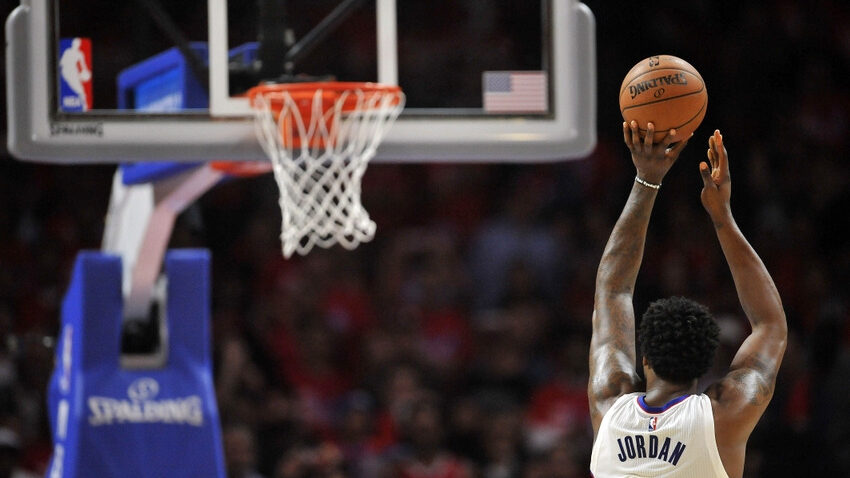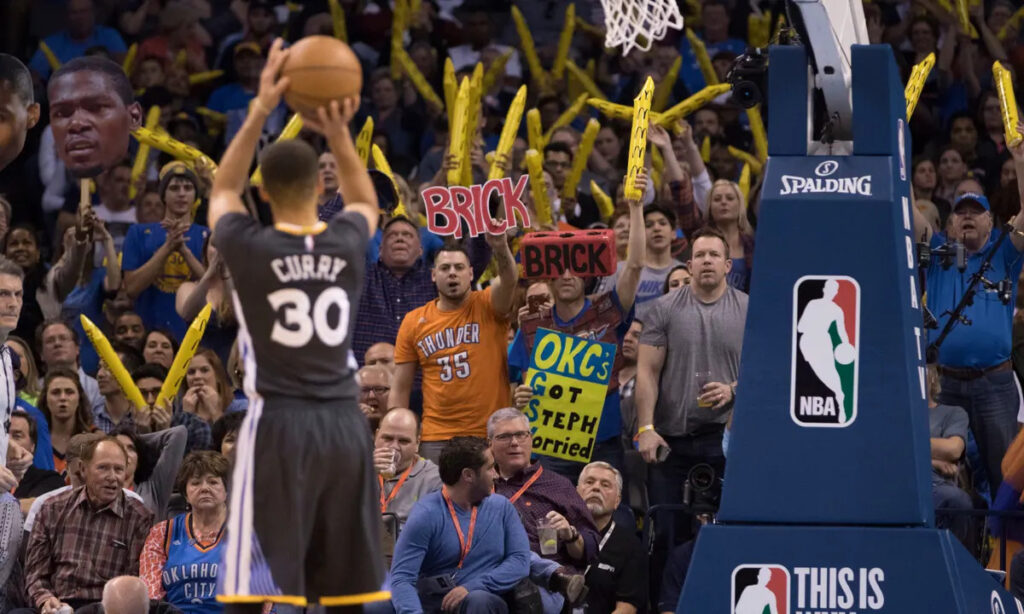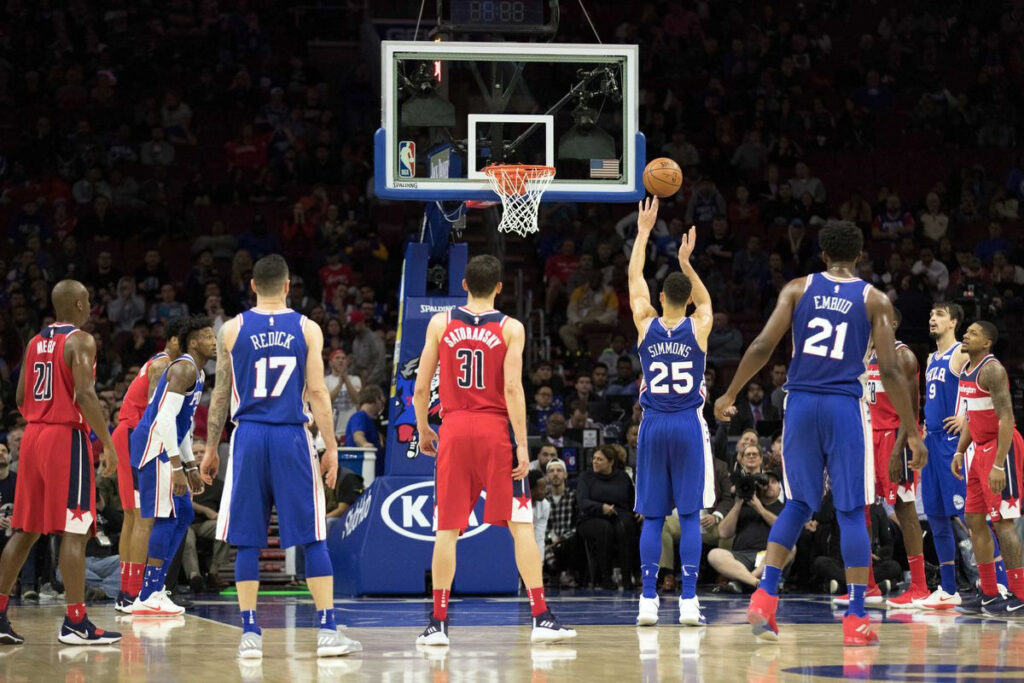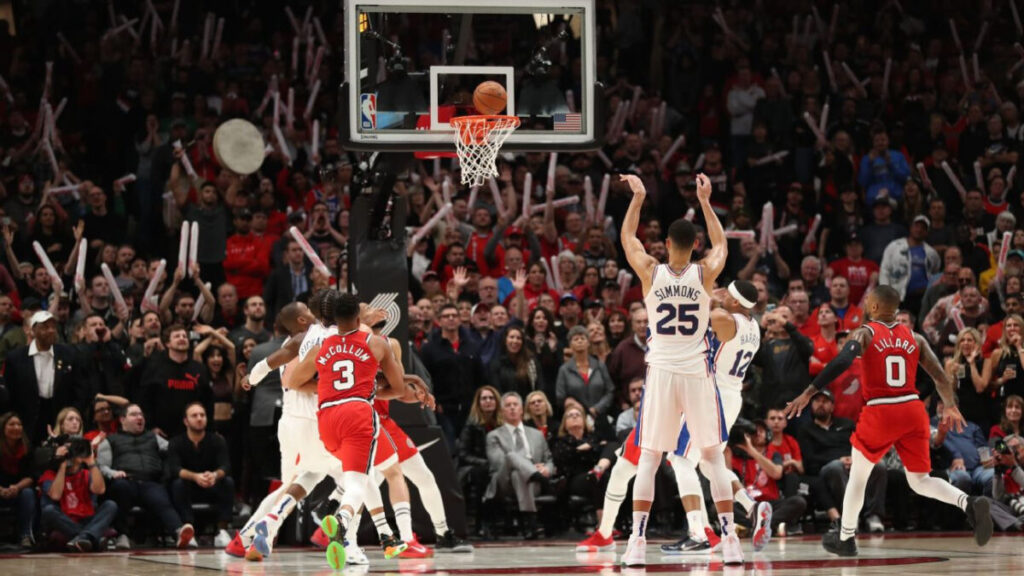
Hey there, basketball fans! Are you ready to take your free throw game to the next level? If so, you’ve come to the right place. In this article, we’ll explore the essential art of the NBA free throw and all its nuances.
From understanding how it works and which fouls result in free throws to recognizing who are the greatest free throw shooters of all time and how best to perfect your own free throw shooting skills and stay focused through it all—it’s all here.
So get ready to uncover the secrets and strategies behind mastering the perfect free throw shot!
What Is a Free Throw in Basketball?
A free throw is an unopposed shot from the free throw line that a player is awarded after a foul has been committed. This penalty shot gives the other team an opportunity to score extra points. The free throw shooter stands at the free throw line and has the ball touched to them. The free throw line is 15 feet away from the center of the basket. That distance equates to 4.57 meters.
Depending on the penalty, the free throw shooter will either be awarded one, two, or three free throws. The value of each free throw is one point, regardless of whether it is a two or three-point field goal attempt. Free throws are an important part of basketball as they are an easy way to score points and can significantly influence the outcome of a game.

Free throw shooting also plays an important role in a player’s stats, as their free throw percentage is used to measure their shooting ability. This percentage is calculated by dividing the number of successful free throws by the number of attempted free throws. Knowing how to shoot the perfect free throw takes practice and skill, which is why some of the best NBA players have become renowned for their free throw shooting abilities.
What Does a Free Throw Attempt Look Like?
When it’s time to take a free throw, the shooter stands behind the foul line and six players – four from the opposing team and two from the shooter’s team – wait around. The shooter has ten seconds to make the shot, and the defensive players need to box out.
During a free throw attempt, when someone’s at the line, four players from the other team and two from the shooter’s team hang back and wait for the shot, while the defenders try to box out. The shooter has just ten seconds to make the shot, which can seem like an eternity under pressure.
The process of shooting a free throw is an art form, and the shooter has to be precise and confident in order to succeed. From the free throw line, the shooter needs to be able to focus and make the shot, no matter the situation, in order to be successful. This is why free throw shooting is so important in the game of basketball, and why it requires practice and skill.
Fouls That Result in Free Throws
Personal technical team, and flagrant fouls are all capable of earning you free throws. Depending on the type of foul, the number of free throws the fouled player receives can vary.
Depending on whether the player was attempting a two or three-point shot, they will be awarded either two or three. When a player is fouled while shooting a two-point shot, they get two free throws, and if they are fouled while shooting a three-pointer, they get three.
Free Throw attempts this postseason:
— NBA World (@NBAW0RLD24) May 7, 2023
213 — Lakers
160 — Opponents
They're leading the NBA in free throw attempts & free throw attempts per game this postseason. pic.twitter.com/hCSN0WBTql
A player doesn’t get any free throws if he’s been fouled and not attempting for a shot. This rule applies to all players regardless of their game statistics.
Common Fouls
Common fouls are those that usually result in free throws. The type of foul determines how many free throws the player earns and whether the other team keeps possession of the ball. Shooting, blocking, and charging fouls are generally the most common ones that will result in free throws.
It all comes down to whether the player who got fouled was trying for a two or three-pointer – that’s what determines how many free throws they get. A player who is fouled while shooting a two-point shot gets two free throw attempts. If they are fouled while shooting a three-pointer, they get three free throws.
The player does not get any free throws in case of a foul if they were not trying for a shot. This is how the rules are set.
Technical Fouls
A technical foul is when a player does something unsportsmanlike, and it results in the other team getting one free throw and keeping possession of the ball. Technical fouls are basically the refs’ way of saying “Hey, that’s not cool!”

It’s when they give a player or coach a penalty for arguing a call or using inappropriate language. Yelling at the refs or using bad language can get you a technical foul real quick. If you commit a technical foul, the other team gets a free throw and keeps the ball afterwards.
Flagrant Fouls
Flagrant fouls are a no-no in basketball – they’re considered extra dangerous or unnecessary and come with harsher punishments, like free throws or getting booted from the game. So they’re a bit more serious than your typical foul.
Flagrant 1 fouls are seen as pretty unnecessary by the refs, so they give the other team free throws as a result. Flagrant 2 fouls are the real deal – they’re considered super dangerous and unnecessary, so if you commit one, you’re outta there! Plus, the other team gets free throws out of it too.
Basketball Penalty Situation
When a player fouls in basketball, the other team is awarded free throws as a penalty. In college basketball, the penalty can be either one-and-one or double bonus, but in the NBA it’s just a bonus. A foul is defined as any illegal physical contact made with an opposing player, or any non-contact technical violation such as a technical foul. Common fouls that can result in free throws include personal fouls, unsporting behavior fouls, flagrant fouls, and team fouls.

When a player is fouled, they receive one free throw and then, depending on the situation, additional free throws. The fouled player must stand behind the free throw line and attempt the shot. If the ball touches the rim or basket, the player can attempt another free throw. If the shooter misses the free throw, the ball is then given to the fouled player or their team. The free throw line can be extended if the foul is committed behind the three point line or in the restricted area.
The most successful free throw shooters in NBA history include Stephen Curry, Kevin Durant, and Kobe Bryant.
College Basketball One and One
The one and one penalty in college basketball is triggered when the other team racks up seven fouls in a half. When a player gets fouled, they receive one free throw, and if it goes in, they get another free throw. If the second free throw is successful, the player and/or their team gets one point. The one and one penalty is only seen in college basketball and not in the NBA.
The one and one penalty helps to keep the game fair by rewarding the team that was fouled with extra points, while still providing the fouling team with a chance to stay in the game. It also gives teams that get ahead a chance to stay ahead, as they will be rewarded with additional free throws. This penalty situation can be a deciding factor in close games, and teams need to be aware of the foul count to ensure they do not enter the one and one penalty situation.
College Basketball Double Bonus
The double bonus penalty in college basketball occurs when a team racks up ten or more fouls in a half. When this happens, the other team enters the “double bonus” zone and gets to shoot two free throws for every foul. That’s right, two free throws for each personal foul. The double bonus is a powerful penalty situation that gives the other team two free throws every time a personal foul is committed. It’s only seen in college basketball and not in the NBA.

The double bonus can be a game-changer. It can turn a game around in a matter of moments, as the other team can quickly rack up points if the free throw shooter is successful. Teams that are ahead need to be aware of their foul count in order to avoid entering the double bonus penalty situation.
The double bonus can make or break a game, and teams need to be aware of their foul count in order to make sure they don’t enter the double bonus penalty situation.
NBA Basketball Bonus
The NBA bonus is a penalty that occurs when a team accumulates five fouls in a quarter. This penalty results in free throws for the opposing team. The player who was fouled gets two free throws when this happens. This is a way for them to make up for the lost points. No double bonus here – just two free throws. The NBA bonus is only seen in the NBA, and not in college basketball.
The NBA bonus is a powerful penalty situation, as it can quickly turn the tide of a game. It rewards the fouled player with two free throws, which can add up quickly if the shooter is successful. Teams that are ahead need to be aware of their foul count in order to avoid entering the bonus penalty situation.
The bonus penalty can be a game-changer, so teams need to be aware of their foul count in order to make sure they don’t enter the bonus penalty situation.
Substitute Free Throw Shooter
A stand-in free throw shooter is someone who steps up to the line when the original free throw shooter is unable to do so. This can occur if the original free throw shooter is injured during a play and is unable to shoot the foul shots. In this case, the head coach has the final say on who the substitute free throw shooter will be. The original free throw shooter cannot return to the game after being taken out for the free throw.

Substitute free throw shooters are important in basketball as it allows teams to continue a play, even if the original free throw shooter is injured. As such, it is important that teams have a dependable free throw shooter on their roster that they can rely on in such a situation. In the NBA, some of the best free throw shooters in history, such as Stephen Curry, have consistently made successful free throws, while other free throw shooters have struggled to make even one free throw.
Even the best free throw shooters have missed shots, and it is important to have a dependable substitute free throw shooter that the team can rely on when the original free throw shooter misses.
The Art of Shooting a Perfect Free Throw
Nailing a free throw is a pretty big deal because it can be the deciding factor between winning and losing a game. It’s a key skill that all basketball players should have down pat. The key to sinking a free throw is all about practice, concentration, posture, follow-through, and visualizing success.
When shooting a free throw, make sure to stand with your feet shoulder-width apart, bend your knees a bit, and keep your shooting arm straight. When you’re ready to shoot, take a deep breath, block out any distractions, and picture the ball going into the hoop. When you’re done, keep your shooting arm up and follow through towards the hoop. Lastly, if you want to make sure you nail it, make sure you visualize a successful shot before you take it.
Best NBA Free Throw Shooters in History
Free throws can be the deciding factor in a basketball game, and some of the best players in NBA history have earned their reputations at the charity stripe. Karl Malone, Stephen Curry, and Kareem Abdul-Jabbar are among the best NBA free throw shooters of all time.

Karl Malone is the king of the NBA when it comes to free throws made, leading the league 8 times and recording a career average of 6.6. He also has a free throw percentage of 74.20%. Stephen Curry, on the other hand, has a free throw percentage of 90.91%. And then there’s Kareem Abdul-Jabbar, who holds the record for the most free throws made in NBA history with 9,935.
These top free throw shooters have been a real game-changer, consistently putting points on the board and nailing those all-important free throws to help their teams come out on top. Free throw shooting is a crucial part of the game, and these players have become legends for their prowess from the free throw line.
Summary
In conclusion, the free throw is a crucial part of basketball that can often be the deciding factor in a game’s outcome. The skill of free throw shooting requires lots of practice and focus, as well as posture and follow-through technique to get the perfect shot. The NBA has seen a few of the best free throw shooters throughout history, with players like Karl Malone, Stephen Curry and Kareem Abdul-Jabbar leading the way.
If you’re looking for tips on how to master this art and become one of the best, then look no further than MasterClass and their wide array of basketball classes with superstar Stephen Curry as your instructor. Take the chance today to learn from the best, and you might just find yourself sinking in one perfect shot after another very soon.
Frequently Asked Questions
What’s the new free throw rule?
The new free throw rule implemented this season states that any player of the offensive team fouled will get one free throw attempt and retain possession of the ball. The only exceptions are in the case of late game or overtime scenarios.
Who has the best free throw in NBA history?
When it comes to free throws, Stephen Curry is the best the NBA has ever seen. His record-breaking 90.91% shooting accuracy on free throws means he’s at the top of the game. No other player has been able to match his success rate!
What are 3 free throws in the NBA?
In the NBA, three free throws are awarded when a player is fouled while shooting for a three-point goal. It’s the referee’s way of rewarding players who are prevented from scoring from a foul committed by the opposing team. This gives them an opportunity to get the full value of their missed shot attempt and complete the play.
When can players move on a free throw?
Players can move on the free throw after the shooter releases the ball and has stepped away from the free throw line. The three seconds rule (also referred to as the three-second rule or three in the key, often termed as lane violation) allows players to enter the lane as soon as the ball has left the shooter’s hands, provided they have been in their designated area until then. Players must also exit the lane quickly in order to avoid a lane violation.





